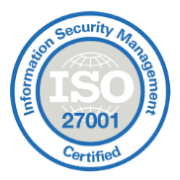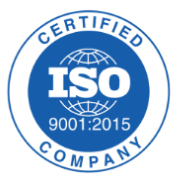The internet has become a big part of our lives because of technologies like smartphones, laptops, sensors, cloud storage, and wireless internet. In addition, these technologies are becoming more affordable, which means that more and more people can connect to the internet seamlessly.
Nowadays, we do almost everything online, from shopping to trading. Many traditional businesses have also moved their operations online, allowing us to buy expensive items like gold jewelry or even houses through successful online stores. Education has also adapted to the digital age, with eLearning replacing traditional chalk-and-board learning in many schools and institutions.
While it’s easy to set up a Learning Management System (LMS), it can be challenging to keep it running smoothly. That’s where LMS E-commerce integration comes in. This integration brings several benefits, and in this blog, we will discuss these advantages and provide tips on achieving effective LMS E-commerce integration.
4 Must-Have Advantages of LMS E-commerce Integration to Expand Your Audience Reach
1. Enhancing User Experience and Driving Sales Growth
Integrating E-commerce with a learning management system offers users a convenient way to handle all their transactions, from registration to payment, using a Single Sign-On (SSO) system. It eliminates the need to switch between different platforms, providing a smooth browsing experience that boosts sales. Buying eLearning products directly through the LMS saves time and ensures higher security than third-party payment portals. Moreover, integrating E-commerce functionality enhances the marketability of your website.
The E-commerce LMS platform is designed to showcase and organize products, making it easier to present training programs and learning tools appealingly. You can also bundle live events, tickets, and discounts with relevant courses. From an administrative perspective, setting up course prerequisites, managing waitlists, and tracking attendance become faster and more efficient.
2. Driving Growth with Complete Analytics and Tracking Capabilities
Ultimately, your goal is to generate revenue and increase your profits. However, with proper analytics, it’s easier to measure the success of your eLearning courses. Tracking the activities of registered users, such as registrations, attendance, downloads, chats, emails, payments, certificate generation, and learning hours, is crucial. Fortunately, most E-commerce platforms like Paradiso eCommerce LMS have built-in analytics and tracking capabilities.
You can access advanced analytics tools when you integrate E-commerce with your LMS. These tools provide valuable insights into your eLearning programs. For example, you can identify and focus on the most successful courses to boost your revenue. Additionally, you can analyze the least profitable courses and work on improving them. The in-depth analysis also ensures accurate training records. Detailed reports offer precise information about users’ progress, and administrators and users can access these records whenever needed.
3. Adaptable Pricing Options and Flexible Learning Hours
Whether your business operates online or in a physical store, having a proper pricing strategy that attracts customers is essential. In today’s competitive market, you should change your prices more often than you think. However, if you have a traditional standalone learning management system (LMS), it can be difficult and expensive to customize your prices. Thankfully, with an E-commerce integrated LMS like Paradiso LMS, you can easily offer different pricing options to customers.
You can adjust prices based on factors like the number of students, where they are located, and current market trends. You can also create various pricing models based on membership levels, payment choices (such as paying in installments), and how individual customers tend to make purchases. This flexibility helps you cater to different types of customers and improve your pricing strategy to maximize sales.
4. Efficient and Automated Management in Real Time
eCommerce LMS Integration can save your time and effort when managing administrative tasks. For example, you can set up rules and settings that make things like registration, creating accounts, tracking progress, and generating certificates much more effortless. In addition, the system automatically keeps track of what users are doing in real time, so you don’t have to enter information manually, which means there’s no room for errors.
If users want to personalize a course to suit their needs, they can do that easily, and any changes they make will be updated automatically. This automation gives you more time to create great content that perfectly meets your client’s needs. So instead of spending time on routine tasks, you can use that time to grow and improve your business.
How To Integrate LMS And eCommerce
1. Select an Appropriate Platform for Your Needs
When considering LMS E-commerce integration, one of the first things to consider is which E-commerce LMS platform to use. With numerous options available, selecting the most suitable one can be challenging.
- Customization and Scalability for Business Growth
When choosing an E-Commerce LMS platform, it’s essential to consider its ease of integration and whether it aligns with your brand image. The integration process should be smooth for both users and administrators. As your business evolves, you might want to make various aesthetic adjustments, so the platform should allow customization without sacrificing quality and effectiveness. Additionally, ensure that the platform is scalable and capable of accommodating the future needs of your growing business.
- Platform Cost and Competitive Options
Cost plays a crucial role in selecting the right platform. You have various options: self-hosted for larger businesses, third-party hosted, add-ons, open source, and essential platforms. Self-hosted platforms require a one-time payment but come with maintenance and hosting expenses. Third-party hosted platforms, on the other hand, charge a monthly fee. The good news is that you can find different platforms at competitive prices, ensuring affordability for your business.
2. Prioritize Functionality That Helps You To choose the Features
When choosing an E-commerce LMS platform, it’s crucial to consider the specific features that align with your needs. Firstly, think about how the platform will support your course format. For example, will it accommodate text and images only, or will you also incorporate videos, audio, webinars, or video conferences? Additionally, you’ll want to provide user support through channels like email, live chat, discussion forums, or text messages. Ensure the platform offers these features.
Equally important is the platform’s ability to integrate with your existing tools. It includes your payment processor, affiliate program manager, email service provider, and other add-ons. The platform should allow for easy migration or provide alternative solutions for these tools.
Lastly, consider the platform’s user-friendliness. If you’re not tech-savvy, spending hours grappling with complex web technology can be frustrating. Instead, opt for an intuitive and easy-to-navigate platform, allowing you to manage your courses and business efficiently without unnecessary technical headaches.
3. Ensure Both Brands Have Successful Integration Earlier
Integrating an LMS and an E-commerce platform can be a tricky task. It involves three parties: you, the LMS vendor if you’re using a third-party hosted LMS and the E-commerce platform vendor. You can ask both vendors for a detailed integration document to make things easier. However, understanding the technical aspects can be challenging if you don’t have a technical background.
The LMS E-commerce integration process is more complicated than it may seem. That’s why choosing an E-commerce platform that has successfully integrated with your specific type of LMS is best. Then, you can ask the vendor directly or search online to determine if the E-commerce platform has a track record of successful integrations.
By selecting an E-commerce platform that has already worked well with your LMS, you can save yourself from potential headaches and complications. In addition, it ensures a smoother integration process and reduces the chances of things going wrong.
4. Always Try to Test Shortlisted Platforms Before Taking an Informed Decision
After narrowing down your options based on your needs and budget, testing out the best E-commerce LMS platform before making a final decision is essential. While this process may take time and incur costs, it’s worth the investment. During the test-driving phase, ensure you use the same content, images, videos, and other course materials across all platforms.
Most E-commerce platforms offer a free trial period but be prepared to pay upfront fees if necessary. Create a mock course and register as a student to fully experience the forum. Remember to assess the integration from user and administrator perspectives, adjusting the testing parameters accordingly. Take note of your experience at each stage of the course and rate your satisfaction on a scale of 1 to 10 for each platform. Ultimately, choose the platform with the highest score, which indicates the best user and administrator experience.
Final Thought
Promoting your eLearning courses is essential, just like any other product. LMS E-commerce integration is a great way to increase sales and enhance your website’s user interface. However, integrating LMS with E-commerce is a difficult task.
Paradiso E-commerce LMS is a valuable tool for businesses and educational institutions seeking to monetize their online courses and training programs. This platform supports multiple currencies and languages, a secure payment gateway, and automated invoicing and receipt features. These capabilities create a streamlined and centralized experience for both users and learners.
This blog aims to clarify why you need LMS E-commerce integration and offers insights on how to achieve it cost-effectively. By implementing this integration, you can maximize the potential of your eLearning business while ensuring a smooth and efficient experience for your users and learners.


















